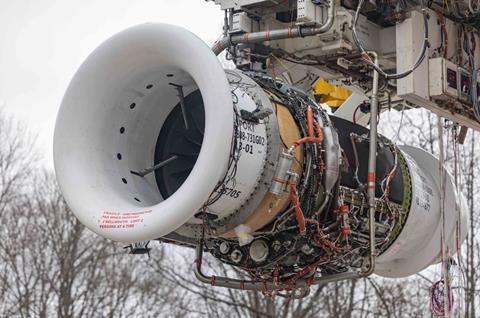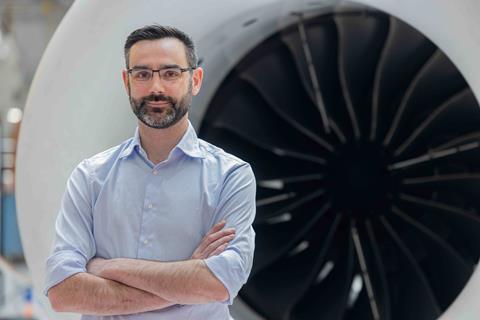
You could say Mike Millhaem is part of the CFM family – the GE Aerospace and Safran Aircraft engines 50-50 joint venture – in more ways than one. His engineer father Bill was a senior executive with GE Aerospace who was involved with many CFM projects over an almost 39-year career with the company. He retired in 2019 as head of the GE90 programme.
Growing up in GE Aerospace’s hometown of Cincinnati, Ohio, Mike remembers his parents frequently having visitors from Snecma for dinner – “My brother, who currently works for GE Healthcare, and I would get kicked upstairs when the guests arrived.” His mother Anne became fluent in French.
“The partnership over these 50 years has seen many lifelong friendships develop,” says Mike, who followed his dad into GE Aerospace 15 years ago as a graduate engineer. For two years he has been the company’s systems leader on a NASA-led project to design a hybrid-electric system intended to support the broader CFM RISE technology demonstrator effort that will be tested on a business jet engine.
Under the NASA HyTEC (Hybrid Thermally Efficient Core) Turbofan Engine Power Extraction Demonstrator, Mike and his colleagues are modifying a GE Aerospace Passport engine with electric motor generators. The idea is to show how the equipment could supplement power on a high-bypass commercial turbofan during different phases of operation.
“What we learn here will feed directly into design work on a compact core demonstrator, which will be HyTEC Phase Two,” says Mike. “I’m very much involved in one path under RISE which is on the core. Another path is focused on the Open Fan technology. At some point these will merge.”
Before RISE, Mike was part of CFM’s previous big new technology effort, the LEAP engine. His first involvement was as a recent GE Aerospace recruit, working on the design of the high-pressure turbine case shortly after the program’s 2008 launch. “It was an exciting time,” he remembers. “The team was growing rapidly.”
After that, he spent six years in roles that took him coast to coast, from GE Aerospace’s campus in the Cincinnati suburb of Evendale to Lynn, Massachusetts, and to Seattle to support testing of an early fan rig for the GE9X engine for the Boeing 777-9. In 2018, he was back in Ohio working on forecasting analytics for the CFM56 programme when he got a call that ended up with him securing a modest place in engine innovation history.
“I’d been there briefly when I learned that the LEAP team needed someone to work out how to clean engine fuel nozzles on the wing,” he says. As is common with many engines in their pre-maturation phase, the LEAP engine’s hotter core operating temperature was resulting in carbon build-up, known as coking, in the nozzle. One maintenance solution was to use detergent to remove the build-up.
“We believed that [detergent] was addressing the symptoms but not the cause, so we asked ourselves: ‘Why don’t we try to cure the problem itself?’,” recalls Mike. “The chief consulting engineer and I bounced ideas around and thought: what if we pump cold air into the engine as soon as it switches off?”
The pair asked to borrow an engine on the test stand at GE Aerospace’s evaluation centre in Peebles, Ohio to test the concept. “The guys at Peebles let us do the test using compressed air that we hooked into the engine bleed ducting and turned off the engine. It turned out to be extraordinarily successful,” he says. “When the engines got hotter again, they stayed below acceptable coking temperatures.”
They reported the results to the LEAP engineering team, and the engine’s Reverse Bleed System “was born”, says Mike. US and European authorities certificated the hardware for the LEAP-1A engine in 2023. CFM began shipping new engines with the RBS earlier in 2024 and it is available as an on-wing retrofit on existing aircraft. The patent is registered as Millhaem et al.
Mike remains passionate about his job, and the chance to work on a project that could help aviation reach its sustainable goals. “It’s tremendously exciting,” he enthuses. “Since I joined GE Aerospace, I wanted to test engines for the next big narrowbody. Nobody has ever run a hybrid turbofan like this demonstrator. It’s a world first. That’s where you want to be as an engineer.”

GE Aerospace plans to hire more than 900 engineers in 2024, reflecting its continued focus on innovation to support current aircraft engine programs and develop new technologies for the future of flight. View job openings at invent.ge/engineering.
*Excerpted from a content partnership with FlightGlobal (CFM International at 50- November 2024).























